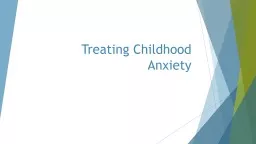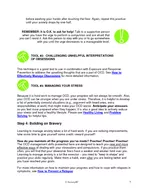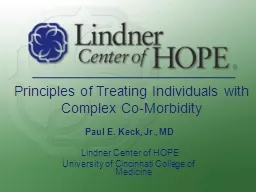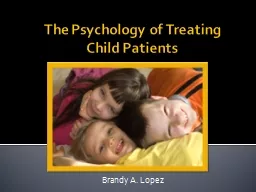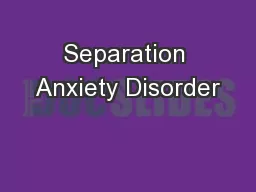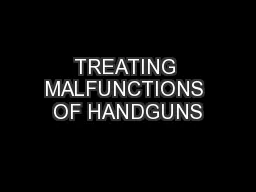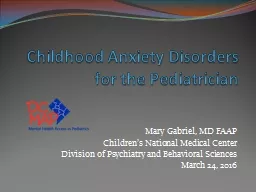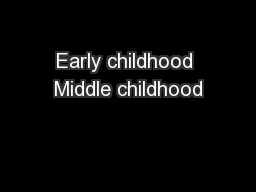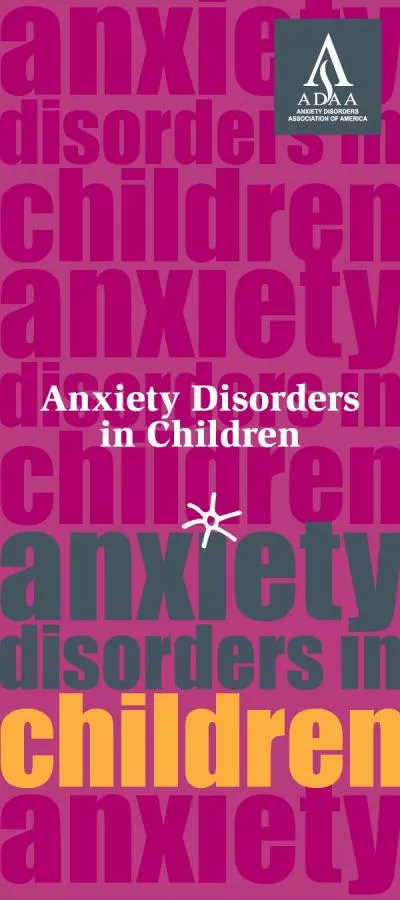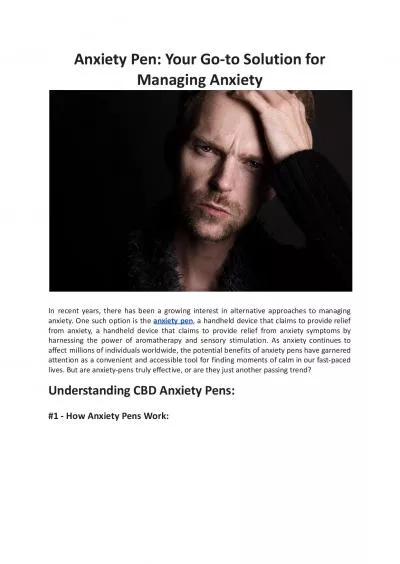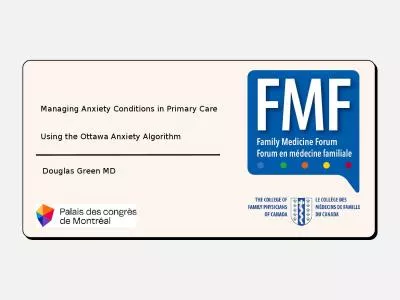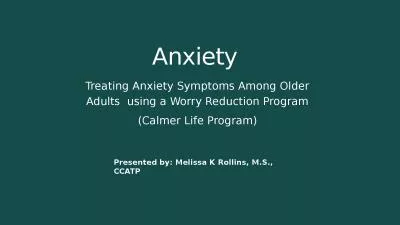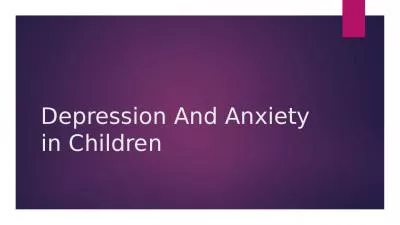PPT-Treating Childhood Anxiety
Author : marina-yarberry | Published Date : 2017-09-10
Preview of Programming Prevalence of anxiety in pediatric population Risks of unmitigated anxiety among CATAY Quick review of the CBT Model of pathology versus adaptive
Presentation Embed Code
Download Presentation
Download Presentation The PPT/PDF document "Treating Childhood Anxiety" is the property of its rightful owner. Permission is granted to download and print the materials on this website for personal, non-commercial use only, and to display it on your personal computer provided you do not modify the materials and that you retain all copyright notices contained in the materials. By downloading content from our website, you accept the terms of this agreement.
Treating Childhood Anxiety: Transcript
Download Rules Of Document
"Treating Childhood Anxiety"The content belongs to its owner. You may download and print it for personal use, without modification, and keep all copyright notices. By downloading, you agree to these terms.
Related Documents

